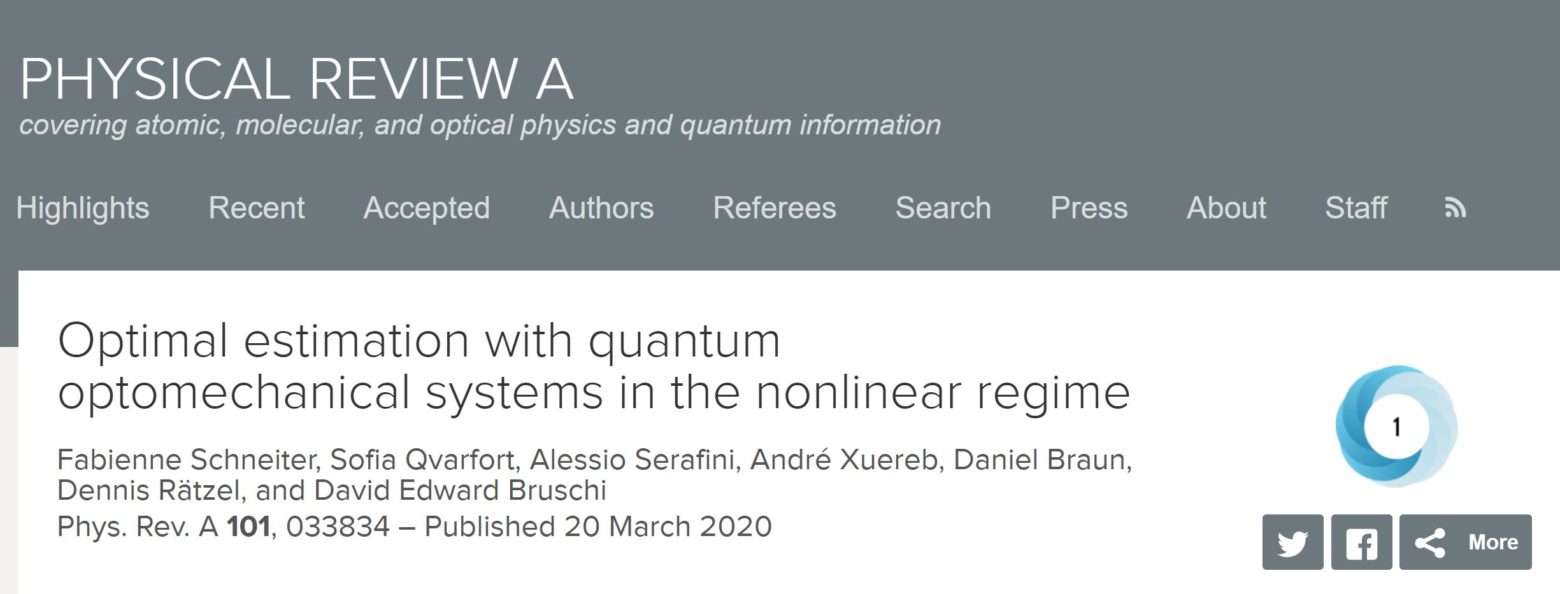I’m very excited that our paper on Optimal estimation with quantum optomechanical systems in the nonlinear regime has finally been published in Physical Review A.
The main result is a general expression for the sensitivity that can be achieved with a system that evolves with the nonlinear optomechanical Hamiltonian. Most importantly, this expression takes into account time-dependent effects, which means that we can finally tackle questions such as the effect of gravitational waves on an optomechanical sensor.
The results in the paper concern three distinct estimation scenarios, which all could potentially include time-dependent effects: (i) estimating a parameter contained in the optomechanical coupling, (ii) estimating a parameter that arises as a linear displacement of the mechanics, and (iii) estimating a parameter that enters into a modification of the mechanical frequency (which is equivalent to the inclusion of a mechanical squeezing term).
What can these time-dependent effects look like? If a force is affecting the sensor, this can often be linearised. For example, the Newtonian potential can be approximated as ![]() , where
, where ![]() is the mass of the probe system,
is the mass of the probe system, ![]() is the gravitational potential and
is the gravitational potential and ![]() is the position. Promoting the position to an operator, the displacement can be written as
is the position. Promoting the position to an operator, the displacement can be written as ![]() , where the annihilation and creation operators act on the mechanics. Using the results from the paper, one can then compute the optimal sensitivity for any parameter contained in the function
, where the annihilation and creation operators act on the mechanics. Using the results from the paper, one can then compute the optimal sensitivity for any parameter contained in the function ![]() .
.
The paper draws on our previous publications, where we derived a simple form of the evolution operator. Our next task will be to apply these results to estimation of time-dependent gravitational fields, which I think will lead to some very exciting results.

